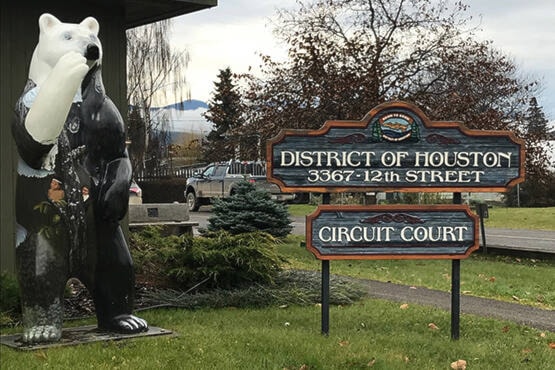The 2021 budget year’s spending is going pretty much as planned, interim finance director Kathleen Day has reported to council of outflows as of September 30.
“At this time I do not see any operational concerns that would necessitate a budget amendment,” she told council in an eight-page memo outlining budgeted amounts for the District’s various services and projects and what has been spent so far.
Some budget items, such as road works and improved safety equipment at the Benson Ave. level rail crossing, have unspent monies because the projects have. been delayed until next year.
Day did note that a majority of the District’s investments with the Bulkley Valley Credit Union are maturing in November and that it has been asked to provide interest rates for a variety of investment vehices.
“Once these rates are provided the mix of investments and future project cash requirements will be reviewed to determine the best investment mix for the next year,” Day wrote.
Councillor Tom Euverman has asked that surpluses within specific areas be investigated during upcoming budget discussions for 2022 to see if the money could be used elsewhere.
Those budget deliberations are to start in January leading toward a deadline of May 15, 2022.
Day, in her interim capacity, has been working at the District offices but that will change to working remotely after Dec. 2.
She will, however, guide budget preparations remotely if a permanent finance director has not been hired yet.
Snow clearing changes delayed
Council has delayed any changes in how and when roads and sidewalks are cleared of snow until they meet next.
It was presented with an examination of the current snowclearing priorities and options for changes in early summer and was to consider any changes at the Nov. 2 meeting.
But council members have asked for more information regarding overtime payments to consider before making any final decisions.
The District has already added to its public works department by creating a working foreman position and a part-time position to beef up its response during and after snowfalls.
Gas money tucked away
The District of Houston has nearly $700,000 tucked away for future use, proceeds of annual rebates of gas taxes provided it by the federal government.
The District did receive a scheduled $189,607 this past May as part of the annual rebate program but in early summer the federal government doubled the amount sent to local governments across the country so that the District received another $181,166.
And with the extra money came a program name change to Community Works Funding and an expansion of the kind of projects the money can finance.
“Eligible projects now include fire halls and fire station infrastructure,” noted interim finance director Kathleen Day of an expanded eligibility list provided by the federal government.
Included in the eligible project list are local roads, recreation and sport infrastructure, tourism infrastructure and better broadband connectivity.
As of Jan. 1, the gas tax fund stood at $1.079 million, increasing to $1.449 million with the two payments.
Council then spent $622,250 to help close off its financing for the just-finished first phase of the downtown revitalization project, $114,684 on road works and $15,000 for warning lights at Mountainview and Jamie Baxter crossings.
That will leave $698,153 for council to consider spending as it puts together the budget plan for 2022.
Council has asked District staffers for recommendations on how the money might be spent as deliberations begin for the next budget year.
Purple monitors sought
Council is supporting a bid by the Bulkley Valley Airshed Management Society to obtain a grant to purchase another air quality monitor for placement in the community.
The monitor, made by the American firm PurpleAir, would add to the society’s gathering of information relating to the quality of the air in the area and what the effect might be on people.
The monitor can, for instance, measure the amount of microscopic particles in the air, including ones referred to as PM2.5 which have a width ten times smaller than the width of a human hair.
These particles, mainly from the burning of wood and fossil fuels, are small enough to penetrate deep into the lungs where they have the potential to cause respiratory and cardiac problems.
